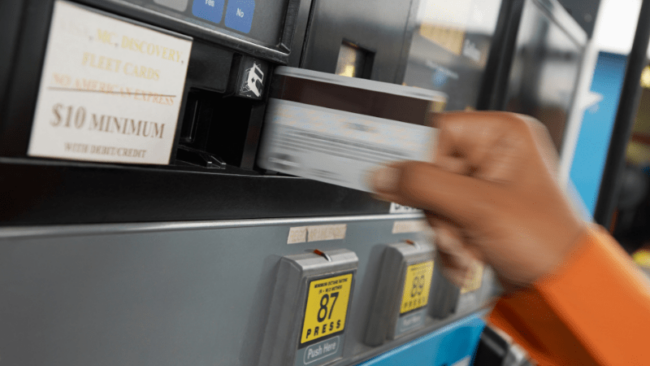Stay connected
Subscribe to our fleet blog and follow us on social media to receive all our fuel and energy industry insights.

Credit card skimming continues to be a problem — particularly at the gas pump. According to FICO, the number of cards affected by card skimming year on year was up by 77% at the end of 2023. The FBI has estimated that card skimming costs financial institutions and their customers more than $1 billion annually.
While contactless payments (also known as Chip and PIN or EMV*) help mitigate skimming, we share in this article the best ways for you and your drivers to remain vigilant.
Thieves attach equipment to a card reader to copy the data stored on the magnetic strip. Once they have that information, they can create a clone for that card.
Criminals attach false devices to the card entry point, capturing and storing data. Newer card readers often have large anti-theft readers to prevent skimmers from being attached, but criminals have simply developed better skimming devices.
The thieves will look for ways to capture the PIN for that card — either by attaching a device on top of the keypad or by installing a camera nearby and recording the PIN entry.
If a card reader looks unfamiliar, check if it’s loose or otherwise doesn’t look quite right. Often, the skimmers lift to reveal the original keypad.
WEX has been fighting fraud for over 40 years and is updating its anti-fraud systems in real-time so that we can foil most scams before they occur.
When you have a fleet card with WEX, you are in a system that helps thwart illegal purchases. Simple things, like limiting the time of day and what can be purchased, help limit exposure to fraudulent spending. More importantly, AI functionality at the back end of WEX’s fleet cards monitor transactions, which can flag unusual activity on cards and stop fraud in its tracks.
WEX’s advanced Machine Learning technology not only captures more fraudulent transactions, it also mitigates an alert being a false positive, reducing disruptions to your drivers’ schedules. The system adapts as it aggregates transactions to detect trends and feeds them back into the system. WEX builds a picture of where there are points of compromise — helping to weed out the possibility of future fraudulent incidents. The company also works with law enforcement, local and federal, to help identify thieves and support successful prosecutions.
The WEXOnline tools help you monitor spend and set limits where necessary. Limits can include dollar amounts, permissible products, and where and when the fleet cards can be used. The limits can make sure that your drivers have what they need but deter unauthorized purchases. You can also alter permissions by driver in real-time, keeping your driver on the road, with a close eye on spending.
An essential element of winning this battle is your drivers. They are busy sticking to their schedules and getting to where they need to be on time, but they have a part to play in stamping out skimmers. Tips for drivers are as follows:
Working with customers and their drivers, WEX can all ensure a more secure purchasing environment.
Resources:
FICO
Reader’s Digest
Sacramento Bee
* EMV is a payment method based on a technical standard for smart payment cards and for payment terminals and automated teller machines which can accept them. EMV stands for “Europay, Mastercard, and Visa”, the three companies that created the standard. (Wikipedia)
All fleet cards are not the same, and different types of fuel cards suit the needs of different kinds and sizes of businesses. View WEX’s fleet card comparison chart to see which fleet fuel card is right for you.
Editorial note: This article was originally published on July 24, 2019, and then again on July 21, 2022, and has been updated for this publication.
Subscribe to our fleet blog and follow us on social media to receive all our fuel and energy industry insights.